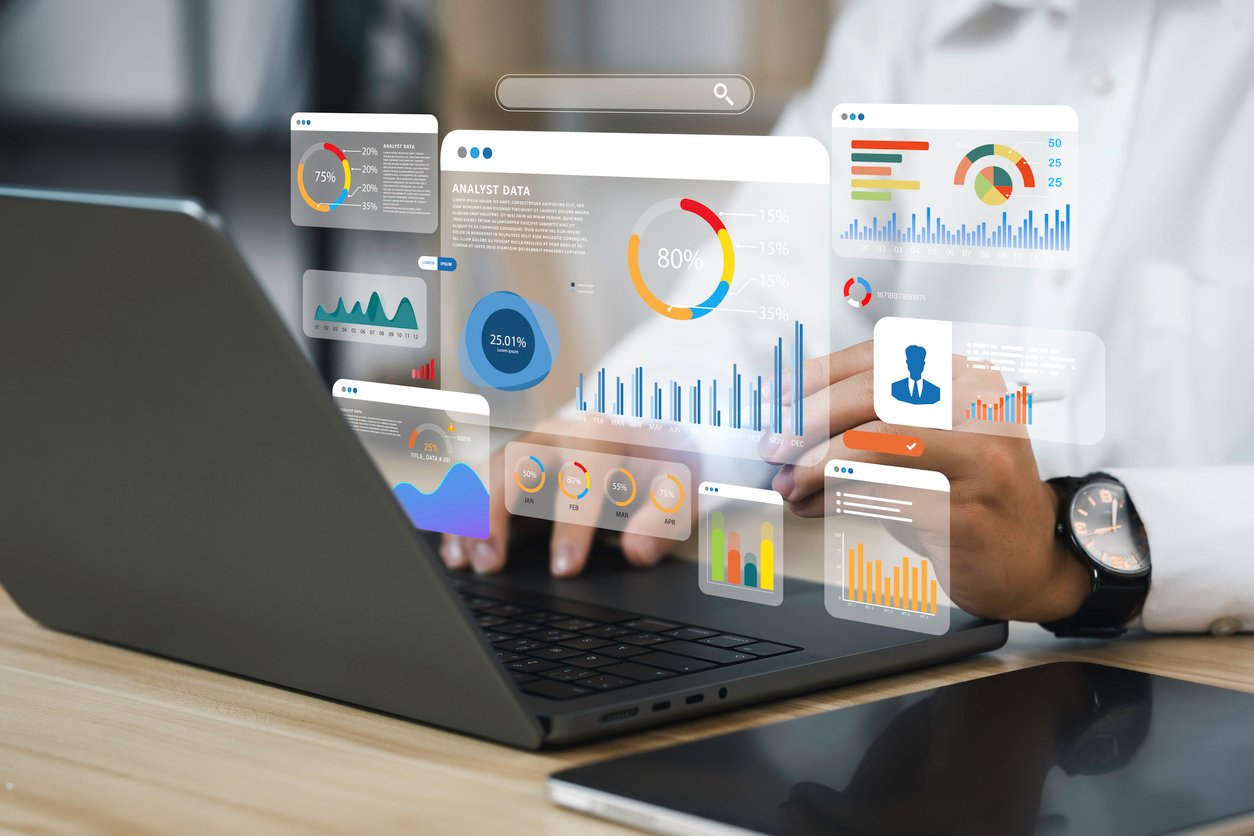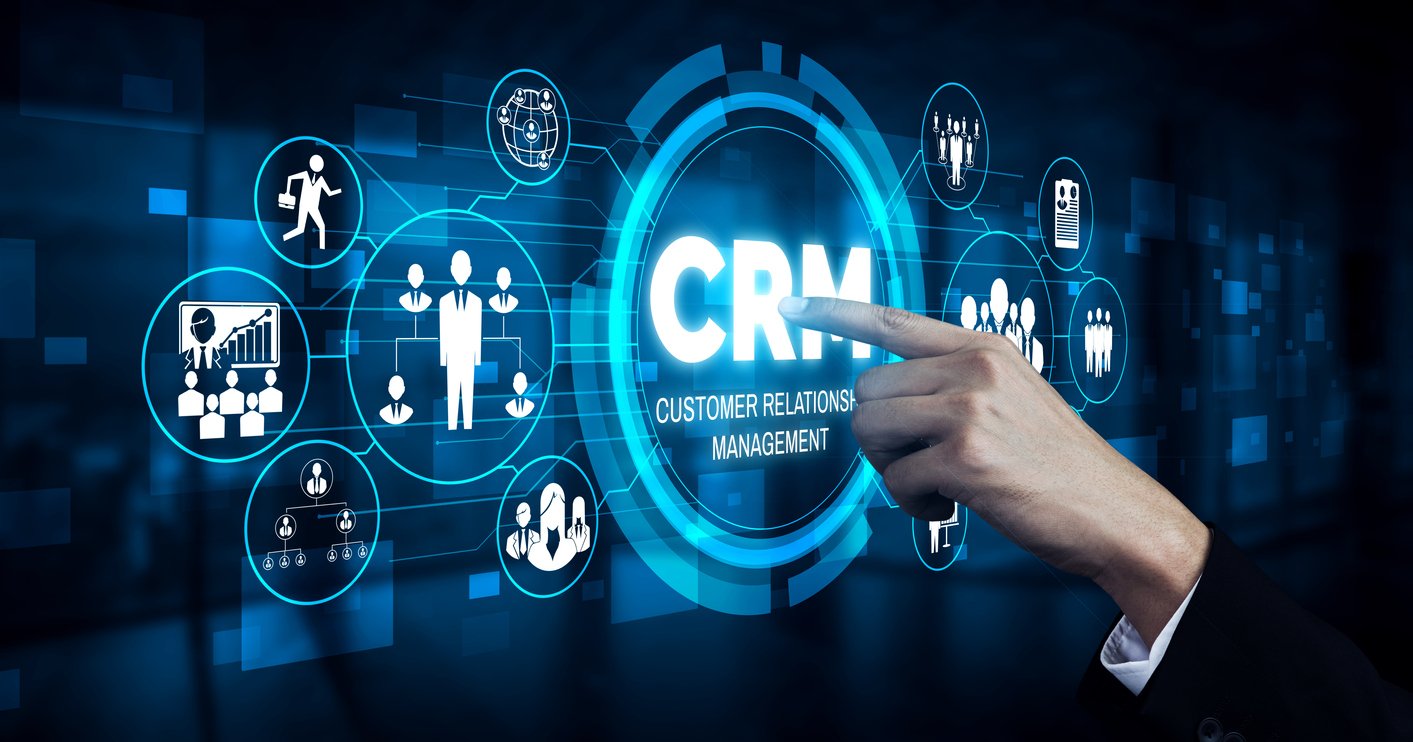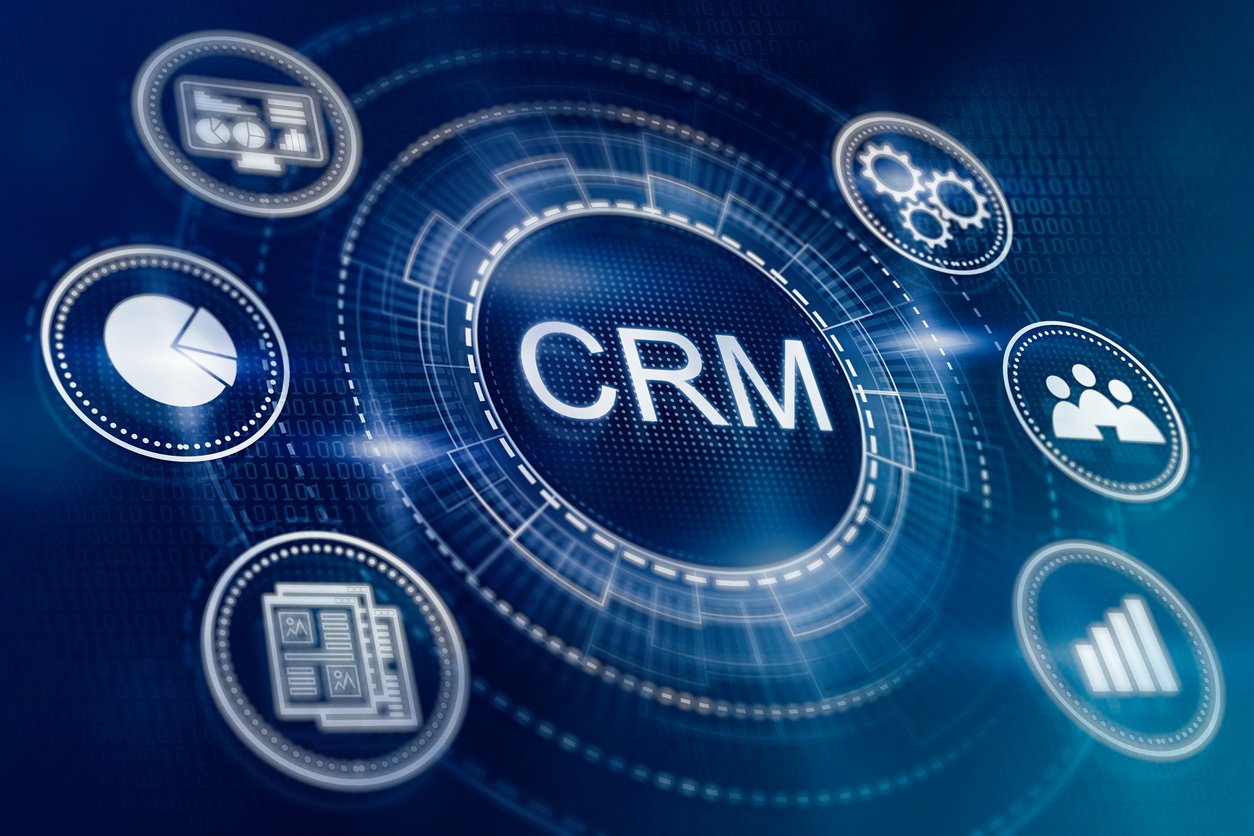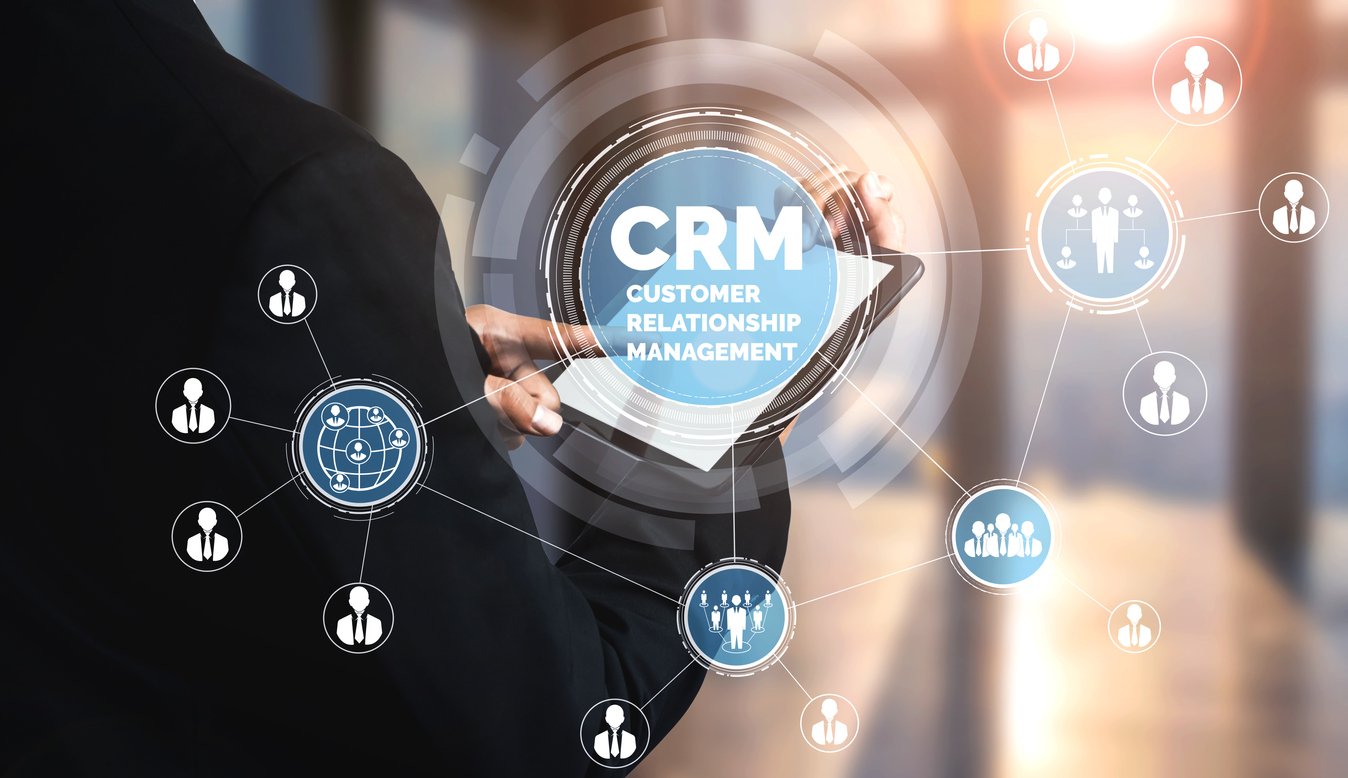
Unlocking the Power of Analytics in CRM - Benefits, Types & Examples
 Updated on
Updated on
 By Bradley Kovacs
By Bradley Kovacs
Bradley Kovacs
Bradley has been passionate about technology since childhood, starting with Microsoft Flight Simulator at age six. In college, he automated his data e...
learn more
Bradley Kovacs
Bradley has been passionate about technology since childhood, starting with Microsoft Flight Simulator at age six. In college, he automated his data e...
Table of Contents
Table of Contents
Have you ever wondered how Superman keeps track of all his contacts? He must have lots of them, correct? From Lois Lane to the Justice League, his social circle is as vast as his powers.
Luckily, he's got a top-notch CRM and analytics system in place.
And if that's good enough for the man of steel, then it's gotta be good enough for us mere mortals too.
Now you may be thinking, "What does Superman have to do with analytics in CRM?" Well, my friends, just like Superman uses his superpowers to keep the world safe, companies can use analytics in CRM to keep their clients happy and their profits soaring.
It's like having superpowers, but you get to understand your customer preferences and behaviors instead of laser visions and flying abilities.
So, what exactly are CRM and analytics? Let's break it down for you in a few simple words:
- Customer data management
- Insights and analysis
- Enhanced customer experience
Essentially analytics in CRM software is a way for organizations to gather and analyze data about their customers, leads, or prospects, which they can then utilize to improve products, services, and overall client experience.
It's like having x-ray visions into your customers' minds (minus the creepy factors), allowing you to anticipate their needs before they know it themselves.
But why is this important?
Well, just like how Superman needs to know his enemies' weaknesses to defeat them, businesses need to know their customers' pain points and desires to stay ahead of the competition.
This article dives into what analytics in CRM is, its benefits, types, examples, and the best tools to track customer data.
Let's travel at the speeds of a moving train and get on with it.
Analytics in CRM Explained

Welcome to the world of CRM analytics, where data meets customer relationships!
It's like the Avengers of the business world, combining the power of data analytics with the art of building customer relationships. Think Iron Man's intelligence with Thor's charm, all rolled into one.
So, what exactly is CRM analytics? Simply put, it's gathering and analyzing customer data to improve your business's interactions with them. It's like having a secret weapon that helps you understand your customers better than they understand themselves.
To make things easier, let's break down the different types of CRM analytics and what they mean (we'll dive into each one deeper a little later on):
|
Type of Analytics |
What it Means |
|
Descriptive |
Tells you what happened in the past |
|
Predictive |
Uses data to predict future outcomes |
|
Prescriptive |
Recommends actions to improve outcomes |
Think of analytics in CRM as the ultimate superpower for companies. It helps you understand your customers, predict future outcomes, and make data-driven, informed decisions to improve your bottom line.
It may be time to embrace your inner superhero and utilize CRM analytics today!
Benefits of Analytics in CRM

Are you exhausted from playing a guessing game with your customers? Wondering what they want and need and how to keep them returning for more?
Fret no more, my friend. Analytics in CRM is here to save the data.
This section explores the benefits that help you make the most of your customer data.
Improved Customer Experience
The discovery, collection, and analysis of customer data help organizations make better decisions via actionable insights that benefit their customers. Detailed analytics allows businesses to create a super-personalized experience for each ideal customer profile (ICP.)
You can match granular behaviors across offline and online channels in real-time through the data unification that CRM systems offer. Businesses can extract data from the following sources:
- Point of sales
- Call center
- Direct mail
- Social media
- Website
- Mobile apps
This information allows teams to track customer interactions and customize marketing material to fit each individual's position in the sales pipeline. The opportunity is exponential for organizations that can meet and exceed expectations for customer experiences.
Monitoring customer experience analytics in CRM can free up financial resources to invest in customer acquisitions while growing the client base and increasing their lifetime value.
Enhanced Sales Performance
Another benefit of analytics in CRM is enhanced sales performance.
By analyzing your customer data, you can identify which products sell the best and which customers buy them. This allows you to create more targeted marketing DRIP campaigns and promotions focusing on those products and clients. You can also identify which sales channels are the most effective and focus your efforts there.
For example, you run an online store that sells beauty products. Using analytics shows that your customers who purchase makeup products are also more likely to buy skincare products. Armed with this information, you can create a bundled promotion that includes both makeup and skincare products, which can increase sales for both product lines.
Better Customer Segmentation
Analytics in CRM assists in improving customer segmentation, which can lead to more effective marketing campaigns and increased sales.
The following customer data can be analyzed to help group prospects into specific categories based on their preferences and needs:
- Behavioral data
- Demographics
- Purchase history
- Opened Emails
- Time spent on a particular page
With segmentation capabilities, a list of hundreds of contacts doesn't seem as overwhelming and unwieldy as before. For instance, how do you know which customers want to see an email about product updates or a new feature?
These people can be sorted by whatever criteria you want.
Increased Customer Retention
Analytics in CRM offers the profound benefit of increased customer retention. Once leads have been acquired and converted, promoting customer loyalty and retaining them for their lifetime value is critical.
Disrupted cash flow or diminishing revenue are the adverse effects of a high customer turnover; that's why using analytics in CRM is so important. It provides the information needed to nurture clients and encourage repeat purchases.
CRM software should provide user behavior tracking, customer support automation, automated ticketing, and sentiment analysis to assist in determining issues and addressing them timeously.
Effective Marketing Campaigns
Last but not least, analytics in CRM helps teams make more effective marketing campaigns.
By analyzing customer data, you can identify which channels and tactics are the most effective for reaching your target audience. You can also determine which customers are most likely to respond to specific campaigns, which can lead to increased engagement and conversions.
For example, let's say you run a clothing store and notice that your customers are most likely to purchase when they receive a personalized email with a discount code. Using analytics to track email open rates and purchase behavior, you can identify which customers are the most likely to respond to these campaigns.
You can create targeted email campaigns with personalized discount codes tailored to each customer's preferences and purchase history.
Types of Analytics in CRM

From descriptive analytics that tells you what happened to predictive analytics that gives you a sneak peek into the future, there's a type of analytics for every situation.
It's like having a personal assistant that's also a wizard.
So let's learn about the different types of analytics in CRM and discover which one will be your new BFF (Best Friend in Forecasting.)
Predictive Analytics
The most commonly utilized category of data analytics is CRM predictive analytics. Companies use this type of analytics in CRM to identify causations, correlations, and trends. The classes can be further segmented into statistical and predictive models; however, understanding the two work hand in hand is essential.
Prescriptive analytics CRM is where big data and AI (artificial intelligence) amalgamate to identify actionable steps and predict outcomes. This process of analytics in CRM can aid in answering queries such as:
- What are the best actions?
- What if we try this?
- What will our future earnings be?
Random testing and optimization are recommended to produce optimal results during this stage. You can suggest a new variable or test the correct one that generates the positive outcome you seek.
Descriptive Analytics
If reporting has a backbone, it would be descriptive analytics—it's impervious to have CRM or business intelligence software without it.
Descriptive data analytics in CRM answers “What, where, when, and how many?”
The table below highlights three advantages of descriptive analytics.
|
Benefit |
Description |
|
Easy to do |
The descriptive analysis doesn't require experience or expertise in analytics or statistical methods. |
|
Lots of tools to assist |
A myriad of analytics tools is available that aid in the complicated task of turning analytics into actionable data. |
|
It answers common company performance queries |
Most salespeople, upper management, or stakeholders want to know things like “What should we do differently?” or “How are we performing?” Descriptive analytics answer these questions no matter how or when they are asked. |
Ad hoc and canned reports are the two additional categories into which descriptive analytics may be divided. A canned report has already been created and contains details on a particular subject. A monthly report from your advertising team or agency that provides performance information on your most recent advertising initiatives illustrates this.
On the other hand, ad hoc reports are typically not planned and are created by you. They are produced when a specific business question has to be addressed. These reports help you learn more precise details about a query.
An ad hoc analysis might concentrate on your company's social media presence, looking at the demographics, other interaction data, and the sorts of individuals who have liked the page and other pages in your sector.
Because of its hyper specificity, a complete image of your social media audience may be provided. You likely won't need to review this kind of report again (unless your audience significantly changes).
Predictive Analysis
Big data is like the powerful kryptonite perfect for robbing Superman of his powers. Still, why would you want to do that to our hero? It may make a lot of sense if you're the villain in this story.
Companies can use this data to highlight issues and help them understand why those problems occurred. Data-found and data-backed factors allow organizations to create prescriptions that lead to considerations and awareness.
Prescriptive analytics follow predictive analytics, allowing you to sprinkle a little kryptonite and change future outcomes. The process advises on possible results and developments likely to boost critical company metrics. It uses optimization and simulations to query, “What should the organization do?”
This advanced CRM analytics concept is based on:
- Improvements that help accomplish the best outcomes.
- Stochastic optimization to help understand how to get the best results and identify data regularly to improve data-driven decisions.
Simulating the future under various sets of scenarios and assumptions allows prescriptive analysis to be performed. With prescriptive analysis, you can investigate multiple suggested actions or steps depending on the combined desired outcomes.
CRM Analytics Examples of How They Can Help Your Business

We have some juicy examples if you want to see the magic of CRM analytics in action. From identifying your most profitable customers to predicting which ones are at risk of leaving, CRM analytics can help you make better decisions fasters.
Let's get into it!
Shows a Clear Customer Journey
You can completely map out the customer journey from start to finish with analytics in CRM software. Every prospect goes through this process, starting when they know nothing about your business to the moment they make their first purchase and become brand advocates.
Impulsive purchases cause the entire journey to happen almost instantaneously. But when it comes to products or services that cost significantly more, the decision maker may need to go through multiple conversion points until finally accepting the deal.
For instance, an organization considering investing in a new software package would perform thorough research, collect and review proposals, and consult key stakeholders. When dealing with such an intricate process, it's crucial to have the right platform in place so that the customer journey is fluent from beginning to end.
With the correct CRM software, like Ringy, you track key metrics while searching through the buyer journey to find buying signals that help you understand their needs, preferences, and behaviors.
These data points are analyzed to identify areas of improvement during the nurturing, selling, or acquisition phases.
Lead Status Changes
Understanding where your prospect is in the buyer's journey is critical to getting them through the funnel toward your goal of closing the sale.
Analytics in CRM dashboards provides easy access to reporting and insight features highlighting KPIs (key performance indicators) and how they impact a company and its forecasting.
Your CRM solution should track critical metrics including but not limited to:
- Social media engagements
- Customer touchpoints
- Website visits
- Completed forms
- Feedback from events or webinars
These figures may not allude to much, but with the correct analytics in CRM, you can identify trends among the target audience or monitor the frequency of their engagement with your brand.
Insights into Customer Retention Strategies
Analytics in CRM also offers insights into client satisfaction by picking up negative and positive action-based signals.
Tracking things, such as conversion subject matters, inbound and outbound calls, and open cases, can divulge information on whether a specific prospect is running into problem after problem or getting their money's worth.
A customer using the same form to renew their contract is an entirely different signal than someone opening a case complaining about a software issue.
Both actions require your team's response but in different ways. In the first scenario, the sales team could follow up with potential cross-sell or upsell opportunities, whereas, in the first request, the customer support team must resolve the issue.
Either way, analyzing this data assists the team in improving customer retention and satisfaction.
3 CRM with Analytics Tools
Are you hunting for a CRM that's more than just a contact list? Look no further, my friend, because we've got three CRM tools with analytics that will knock your socks off (in a good way, of course.)
These tools go beyond storing customer data and help make sense of it with powerful analytics features.
Here we break down our favorite CRMs with built-in analytics features.
Ringy
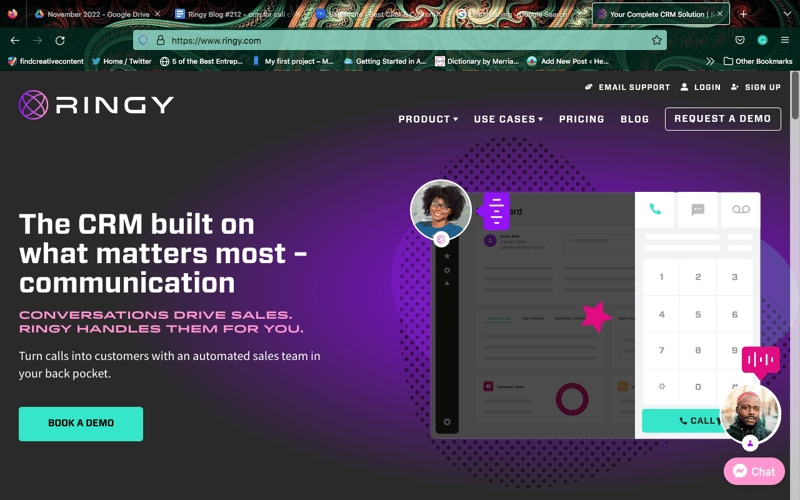
This platform is an innovative CRM system that stands out from the crowd due to its advanced analytics capabilities.
Ringy is designed to assist companies in gaining insights into their customers' needs, preferences, and behaviors and utilize this information to create more effective marketing campaigns, improve sales performance, and enhance the customer experience.
Here are three benefits of Ringy:
|
Benefit |
Description |
|
Improved customer segmentation |
By utilizing customer segmentation tools, companies can identify and target specific groups of clients with tailored marketing messages. |
|
Enhanced sales performance |
Real-time analytics in CRM platforms allow you to locate areas for improvement and adjust your marketing plan accordingly |
|
Increased customer retention rates |
Organizations can improve customer loyalty and develop effective retention strategies based on the prospect's preferences and requirements. |
Ringy is the best CRM platform with analytics capabilities due to its advanced tools and features, user-friendly interface, and range of integrations with other business tools.
Moreover, the solution now features an AI Tool paired with ChatGPT, simplifying customer communication.
Ringy's AI Tool costs $10/month and helps you deliver the perfect message at the correct time. It works by suggesting replies to prospects based on previous communications or preferences.
With Ringy's plethora of features to help insurance, SaaS, financial services, and remote sales organizations grow, you'd be silly not to try it.
Pipedrive
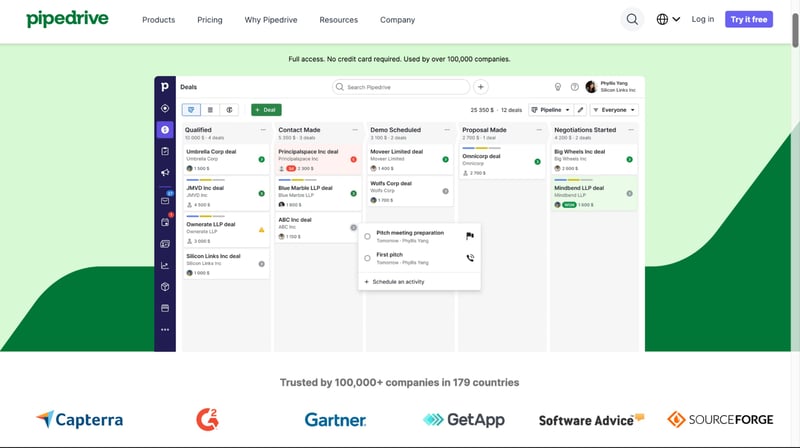
If you're looking for a user-friendly interface with scalability, Pipedrive may be the best option. They offer easy-to-understand displays, visual charts of pipeline drivers, and a stack of details.
One of the best features of Pipedrive is its reporting functionality customization, where you can identify the customer who brings the most cash into your organization. You can even import existing data from third-party vendors or spreadsheets into Pipedrive, and the same goes for exporting your data to share with others in your business.
Campaigns by Pipedrive bring sales and marketing under a single roof, so you can nurture and grow leads into sales-ready prospects.
With Pipedrive, you can:
- Use real-time reporting to improve engagement
- Craft beautiful campaigns in minutes
- Unify marketing and sales data in a centralized database
- Segment the target audience to win prospects
Pipedrive allows you to share live dashboard data with team members, managers, stakeholders, and other users so that everyone is on the same page. There's no need to print your charts or graphs and stick them on a noticeboard.
Salesforce
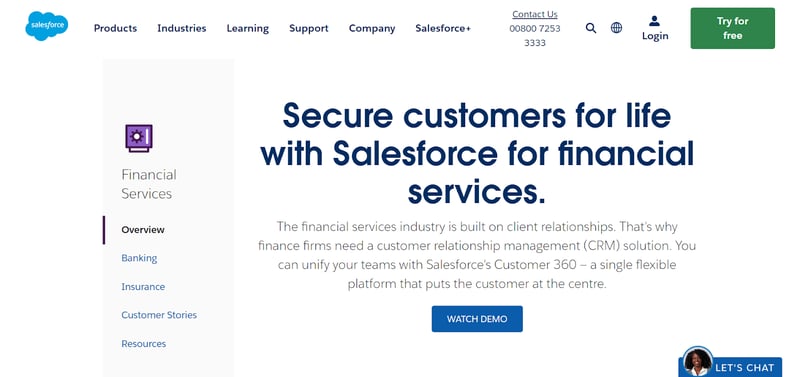
This platform is advantageous because it is one of the longest-standing CRMs in the universe. It's a pillar in the industry and has helped many businesses scale to exponential heights.
You get a fully customizable and highly visual dashboard, allowing you to build one from scratch or use predefined templates highlighting essential reports and metrics. Salesforce also allows you to filter down calls, open cases, chatbot conversions, social media posts, and live orders.
Like Ringy, Salesforce is loaded with features to make your customer relationship management tasks much more manageable. Creating customized reports, monitoring team performance, and tracking user analytics is easy. However, due to this CRM analytics pricing and complexity, it may be better suited for more prominent corporations—if you're a small business, Salesforce will not make the cut.
Analytics in CRM - FAQs
Have you got questions about analytics in CRM? We've got answers! Whether you're a seasoned pro or just dipping your toes into the world of analytics, navigating this world can sometimes feel overwhelming.
But fear not, because in this section, we'll tackle some of the most frequently asked questions about analytics in CRM.
What Is Analytics in CRM?
Analytics in CRM refers to collecting, analyzing, and interpreting data from customer interactions and transactions within a CRM system to gain insights and improve business decisions.
Why Is Analytics Important in CRM?
Analytics in CRM allows businesses to gain valuable insights into customer behavior, preferences, and needs, which can help them tailor their products and services to meet those needs. It also enables businesses to make informed decisions about sales and marketing strategies, customer service, and more.
What Types of Data Can Be Analyzed in CRM?
CRM analytics can analyze a wide range of data, including customer demographics, purchasing behavior, customer service interactions, social media interactions, and more.
How Is Analytics Data Collected in CRM?
Data is collected in CRM through various channels such as web forms, surveys, social media, and customer support interactions. The data is then stored and organized within the CRM system.
What Are Some Common Analytics Techniques Used in CRM?
Common analytics techniques used in CRM include customer segmentation, predictive modeling, sentiment analysis, and trend analysis.
What Are the Benefits of Using Analytics in CRM?
The benefits of using analytics in CRM include:
- Better customer insights.
- Improved decision-making.
- Increased customer satisfaction.
- More effective marketing campaigns.
- Improved overall business performance.
What Are Common Challenges in Implementing Analytics in CRM?
Some common challenges in implementing analytics in CRM include data quality issues, data integration challenges, lack of technical expertise, and employees' resistance to change.
How can Businesses Overcome These Challenges?
Businesses can overcome these challenges by investing in data quality initiatives, using data integration tools, providing training and support to employees, and developing a culture of data-driven decision-making.
Analytics in CRM - Final Thoughts
CRM analytics is the business world's superhero, much like Superman.
Like the Man of Steel, analytics swoops in and saves the day by providing valuable insights and data that help businesses make smarter decisions.
But just like Superman, analytics can't do it all alone. It needs the right tools and support to truly succeed. That's where Ringy comes in, with its built-in analytics capabilities that help businesses grow and thrive.
Think of Ringy as the Superman to your business's Lois Lane, always ready to fly in and save the day with its powerful tools and insights. With Ringy, you can make smarter decisions, streamline your processes, and supercharge business growth.
So if you're ready to take your business to the next level, it's time to call in the big guns. It's time to harness the power of analytics in CRM with Ringy, the ultimate superhero solution for your business. Don't settle for anything less than the best – request a demo and watch your organization fly above the clouds.

Skyrocket your sales with the CRM that does it all.
Calling? Check. SMS? Check. Automation and AI? Check. Effortlessly keep in touch with your customers and boost your revenue without limits.

Take your sales to new heights with Ringy.
Sales in a slump? Ringy gives you the tools and flexibility you need to capture leads, engage with them, and turn them into customers.
Subscribe to Our Blog
Enter your email to get the latest updates sent straight to your inbox!
Categories
Related Articles













